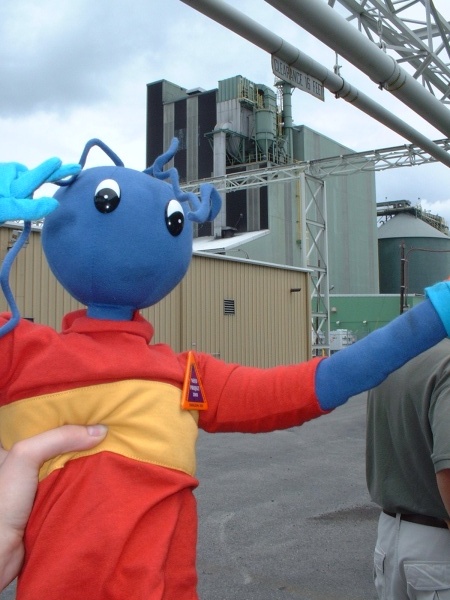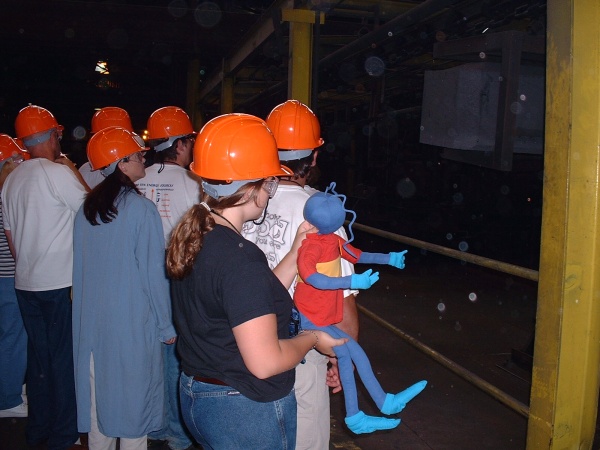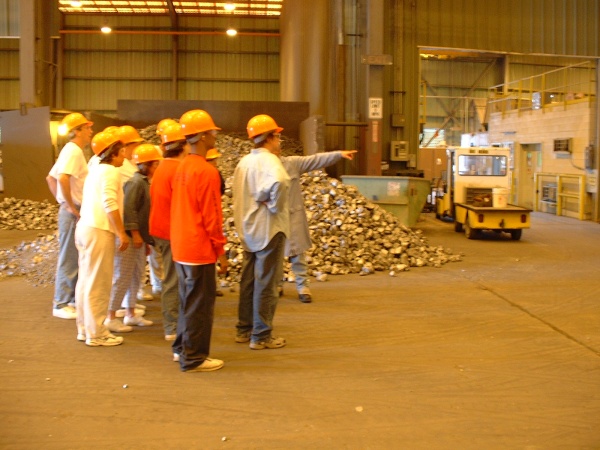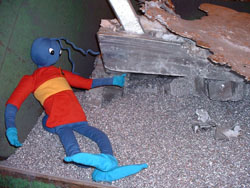A Report from Energy Ant — My Trip to the Alcoa Aluminum Plant Near Charleston, South Carolina




We wanted to learn more about how we use energy to make the products we need. Since we use a LOT of aluminum, today we visited the Alcoa aluminum plant outside of Charleston, South Carolina. At this plant, this widely used metal is made to be used for soda cans, aluminum foil, electrical wire, frames for bicycles, cars, airplanes, and buildings — and for much, much more! It is an important metal because it conducts electricity and heat, and it is also lightweight, recyclable, nonmagnetic, highly workable, and even naturally good-looking.
Safety is very important at Alcoa. Since we would be viewing the machinery up close, we had to wear really cool goggles, hard hats, and flame resistant jackets!
"It all starts with dirt," our tour guide told us. The dirt used to make aluminum is called bauxite ore. In a process called refining, the bauxite is mixed with lime and caustic soda, and then the mixture is heated. (Things that are caustic are capable of burning, corroding, dissolving, or eating away by chemical action.) The soda causes the aluminum oxide to separate from the rest of the dirt, and the heat removes unwanted water by turning it to steam. After some cleaning, a white powder called alumina is left. It looks a lot like sugar.
The next step in this process is smelting — that’s how the white alumina turns into the aluminum we use. First, the powdered alumina is dissolved in a cryolite bath inside large carbon-lined pots. Next, a powerful electrical current is sent through the bath, and the aluminum metal separates from the chemicals. (By the way, a side effect of this process is a magnetic field around the machines. Our guide gave us paper clips to play with — they danced in out hands and stood straight up when placed on the ground!)
Then, the aluminum is mixed with other metals in the furnace. When two metals (or a metal and a chemical) are mixed together, it is called an alloy. By creating alloys, the properties of the aluminum are changed. (Think about how aluminum foil is different from the aluminum used for cars.) Finally, the metal is poured into different molds. This was one of the best parts of the tour because we could see the red-hot metal being poured, and we were surrounded by giant beams, tubes, and sheets of aluminum!
One of the best things about aluminum is that it is recyclable. Not only does this reduce the amount of waste in landfills, but it also saves money and energy. Recycling uses 95% less energy than making new metal from ore. Cars that use aluminum are lighter, so they burn less fuel and create less air pollution. By the way, did you know that in the United States two-thirds of beverage cans are returned for recycling and that 85% to 90% of the aluminum in cars is recycled?
My trip to the Alcoa aluminum plant was was a lot of fun! It was really neat to see how things I use every day are made from the earth’s natural resources — and how they can be recycled!


